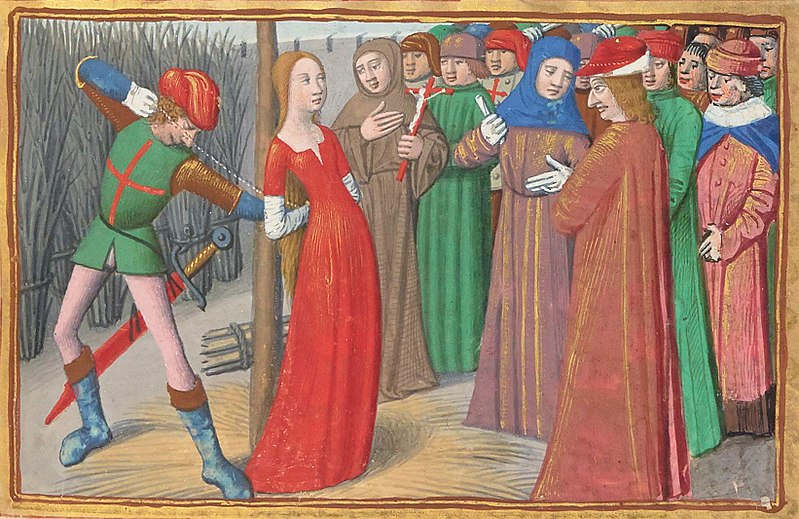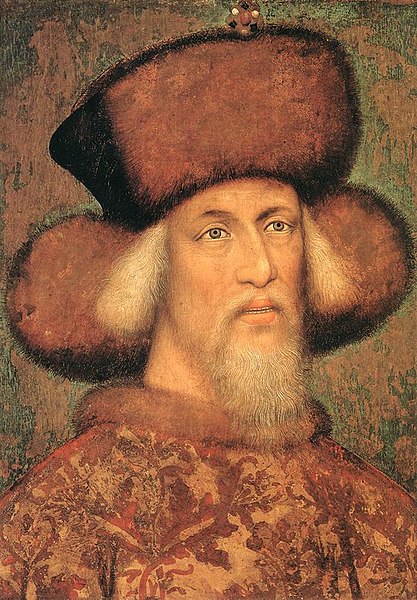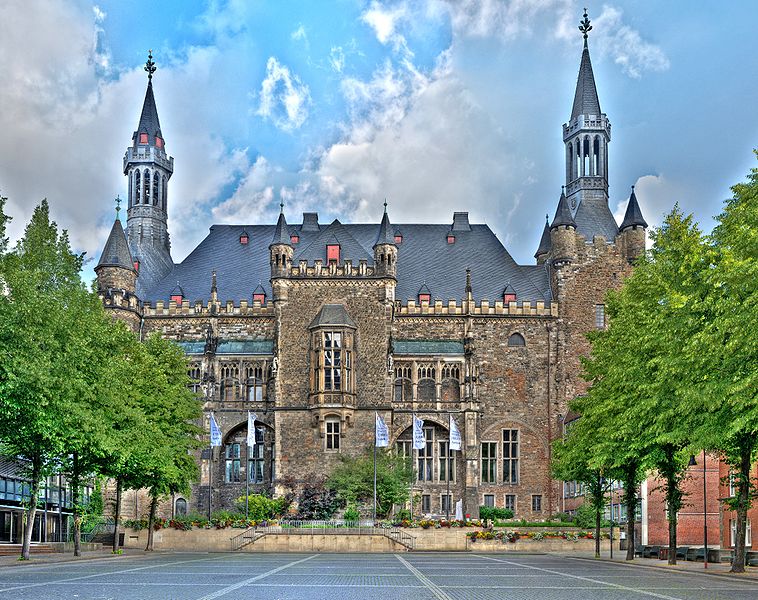 |
| Philip the Good |
Led by the Nose in Arras
One of the
major stumbling blocks to a treaty between the Burgundians and the French was
Charles VII’s involvement in the murder of Philip’s father John the Fearless in
Paris in 1419. Philip was assured that the pope’s[i] envoys, the Cardinal
Cyprus Hugh de Lusignan[ii] and Cardinal Albergati, would ensure that Charles did
penance for the deed.
The French
and the Burgundians signed the Treaty of Arras on 21st September 1435[iii]. Philip was not a
diplomat and was led by the nose by Charles VII who offered terms he never
meant to keep in order to detach the Burgundians from their former allies.
Charles bribed a number of important members of the Burgundian council to
encourage them to support the treaty. The bribed included Philip’s most senior
and trusted advisor Antoine, Lord of Croy [iv] along with Chancellor
Rolin.
‘To the said Nicolas Rolin 10,000 saluts[v]
To the said lord of Croy, likewise 10,000 s
To the said lord of Charny 8,000 s
 |
| Antoine de Croy |
The perfidy
was not the councillors alone; Isabella too fell for French persuasiveness and
accepted a pension of £4,000 per annum[viii] as thanks for her
services as a negotiator of the Franco-Burgundian peace treaty. This was rent
monies from lands Philip had given his wife, but without Charles to ensure that
the money was paid to Isabella, she had little chance of receiving the monies.
Upon
recognizing Charles VII as king of France and returning the county of Tonnere to the crown Philip was given; the County of Auxerre and the County of
Boulogne, the cities on the Somme and Péronne, Ponthieu. The Vermandois,
with its capital Saint-Quentin.
Philip was excused from giving homage to the man he
believed complicit in his father’s murder[ix].
Problems at Home and Abroad
It did not
take long before Charles showed his true colours, he refused to undertake the
penance imposed upon him for the murder of John the Fearless[x]. Charles also ordered his
troops to attack the lands he’d given Philip and encouraged raids on the
borders with Burgundy. In addition Charles refused to recognise Philip’s
privileges due to a Prince of the Blood[xi].
The English
for their part, in retaliation at Philip’s perfidy, were negotiating trade
deals direct with the merchants of the lowlands, without going through Philip.
The Burgundians retaliated by attacking English trading vessels and piracy
abounded, causing problems for all nations dependent on trade. Burgundy in
particular was hit and Philip was chronically short of ready cash[xii].
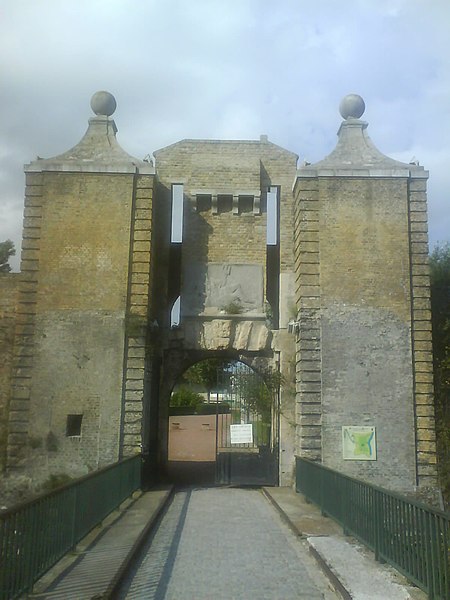 |
| Neptune Gate, Calais |
In September
1435 John of Bedford died and his brother Humphrey, Duke of Gloucester emerged
as the most powerful figure in the English government. Humphrey’s marriage to
Jacqueline of Hainault meant he was antipathetic to Philip and now he tried to
seize Flanders.
Rumours were
rife that Philip intended to attack Calais in the summer of 1436. Philip’s army settled before the town on 9th
July, but he was unable to stop access from the sea. Running short of money
Philip wrote to Isabella pleading for funds to continue the siege. Isabella
sent 1,000 saluts[xiii]
of her own money, to no avail as Philip’s men abandoned him on 28th
July. A few months later Hue
de Lannoy[xiv]
wrote to Philip about the problems Burgundy was facing;
‘You must have appreciated,
during the siege of Calais, what harm is done by lack of finance, and it is to
be feared that the war has just begun.’[xv]
Negotiations
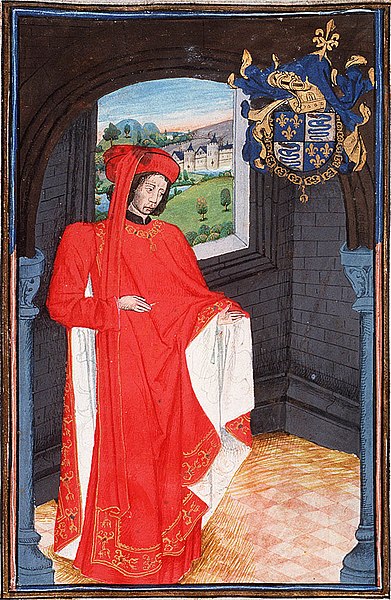 |
| Charles d'Orleans |
Philip
turned to his lands in Artois to mobilise another army. He informed Isabella to
meet with the leaders of Ghent, Bruges and Ypres and to negotiate a solution to
the uprisings by 13th August 1436. Philip needed to get an army in
the field to fend off any revenge attacks by the English.
Things went
from bad to worse and two of Philip’s men were assaulted, one of whom died of
his wounds. In trying to save the wives of the two men, Isabella’s convoy was
searched by angry militia. Philip himself was assaulted in Ghent on September 3rd;
his bodyguard was disarmed and he was kept prisoner by the citizens until he
agreed to their demands.
Hue de
Lannoy agreed with Philip that Burgundy needed allies at the French court in
order to persuade Charles VII to desist in his attacks on Burgundy’s frontiers,
especially as they believed that the English would once again start raiding.
Philip believed that there were two possibilities he could pursue to gain his
ends;
·
or
forgiving the 400,000 gold crown[xvii] ransom agreed when
Philip’s men captured René of Anjou[xviii]
Philip opted
to play the first card and hold René’s ransom as a backup card. After Isabella
negotiated with them, the English undertook to allow Charles of Orléans to tend
the upcoming negotiations;
‘That same autumn the Duke of Orléans, who had been
a prisoner in England ever since the battle of Agincourt, was released…..it was
hoped that his presence and influence in France would further the English
cause, and the duke undertook to do his best in the interests of peace.’[xix]
 |
| Hue de Lannoy |
Isabella helped prod the French
nobility into paying up towards Charles of Orléans ransom.
Rebellion
continued to flare throughout Flanders during the remainder of the year and
into 1437 as well. The Flemings blamed Philip’s policies for the loss of trade,
they were not alone in this; Hue de Lannoy pointed out to Philip;
‘The English are planning to
keep a large number of ships at sea to effect a commercial blockade of your
land of Flanders. This is a grave danger, for much harm would result if that
country were deprived for any length of time of its cloth industry and
commerce.’[xx]
The people
also blamed Philip for the growing struggles between merchants and artisans and
rivalry among the major towns of the region. The people seemed to regard
Isabella as separate and apart from her husband; recognising that she
understood the problems facing a maritime economy.
Bibliography
The Hundred
Years War – Alfred Burne, Folio Society 2005
Edward IV –
Keith Dockray, Fonthill Media Limited 2015
Wars of the
Roses – John Gillingham, Weidenfeld Paperbacks 1990
The Reign of
Henry VI – RA Griffiths, Sutton Publishing Ltd 1998
Europe:
Hierarchy and Revolt 1320-1450 – George Holmes, Fontana 1984
The
Fifteenth Century – EF Jacob, Oxford University Press 1997
Margaret of
Anjou – Helen E Maurer, Boydell Press 2003
Louis XI –
Paul Murray Kendall, Sphere Books Ltd 1974
Prince Henry
– Peter Russell, Yale University Press 2000
Isabel of
Burgundy – Aline S Taylor, Madison Books 2001
John the
Fearless – Richard Vaughan, Longmans, Green and Co Ltd, 1966
Philip the
Good – Richard Vaughan, Boydell Press 2014
Charles the
Bold – Richard Vaughan, Boydell Press 2002
www.wikipedia.en
[ii]
Known as the Cardinal of Cyprus
[iii]
Shortly after the death of John of Bedford
[iv]
Leader of the pro-French party at the Burgundian court
[v]
On the assumption that the salut was equal in worth to the French livre then in
2015 this payment would have been worth; historic standard of
living value of that income or
wealth is £7,318,000.00 labour earnings of
that income or wealth is £59,830,000.00 economic status value of that income or wealth is £247,500,000.00 economic power value of that income or wealth is £4,461,000,000.00 www.measuringworth.com
[vi]
Jan van Hoorn, admiral of Flanders, killed the following year by Flemings after
being accused of accepting English bribes
[vii]
Philip the Good - Vaughan
[viii]
In 2015 the relative: historic standard of
living value of that income or
wealth is £2,927,000.00 labour earnings of
that income or wealth is £23,930,000.00 economic status value of that income or wealth is £98,990,000.00 economic power value of that income or wealth is £1,784,000,000.00 www.measuringworth.com
[ix]
Upon the death of either Philip or Charles the giving of homage for the
Burgundian lands in France would resume
[x]
To apologise for his involvement and to set up a number of religious
foundations in memory of the duke
[xii]
A frequent problem for any nobility whose worth was usually measured in lands
[xiii]
On the assumption that the salut was equal in worth to the French livre then in
2015 this payment would have been worth in 2015 the
relative: labour cost of that
project is £6,171,000.00 economic cost of
that project is £483,400,000.00 www.measuringworth.com
[xv]
Philip the Good - Vaughan
[xvi]
Who had been held captive for 23 years, ever since the Battle of Agincourt; his
family had been unable to raise the ransom demanded by the English for a Prince
of the Blood. see http://wolfgang20.blogspot.co.uk/2013/04/charles-duke-of-orleans-ii.html
[xvii]
Anjou had been released in 1437; in 2015 the relative: historic standard of
living value of that income or
wealth is £224,500,000.00 labour earnings of
that income or wealth is £2,241,000,000.00 economic status value of that income or wealth is £8,615,000,000.00 economic power value of that income or wealth is £156,700,000,000.00 www.measuringworth.com
[xix]
The Hundred Years War - Burne
[xx]
Philip the Good - Vaughan

